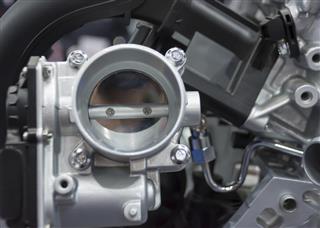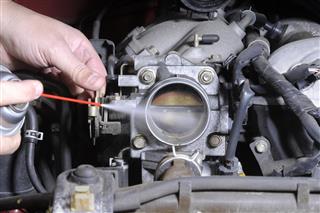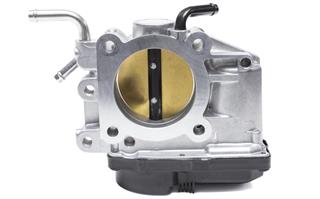
One of the more frequent problems with modern vehicles is a bad throttle position sensor (TPS). The tiny thing that keeps your car working, often falls prey to regular wear and tear, and therefore must be taken care of.
Did You Know?
Most modern-day throttle position sensors employ non-contact type elements, like two magnets and a Hall effect sensor. These sensors are less prone to wear, and thus last longer.
Throttle Position Sensor Functionality
The function of the throttle position sensor is to supply information to the car’s computer about the position of the car’s throttle. It contains electro-mechanical parts, which are prone to weathering. A malfunctioning TPS can result in improper or no data being fed to the car’s computer, which monitors engine performance, in respect to the fuel efficiency of the car.
A Throttle Position Sensor (TPS) usually detects heat, light, and even moisture. It takes all the necessary measurements and sends it over to the Electronic Control Module. The biggest problem with a TPS is that it’s so small and intricate, that repairing it is almost always out of the question. But the good news is, a decent TPS isn’t that hard on your wallet.
Symptoms of a Defective TPS
One unique thing about TPS failure is that all the symptoms may show up at the same time. It doesn’t mean that they show individually, but it often happens that you’ll notice more than just one sign.
The ‘Check Engine’ Light is On
This is the first thing that you’ll notice. The light is meant to tell you, the driver, that something is wrong with either a component of the car, or its sensor. It’s always advisable to get your car checked out by a mechanic as early as possible if this light is on.
Bucking and Jerking/Hesitation while Accelerating
Another common symptom related to a bad TPS is the jerking of the car, especially when accelerating. Without proper inputs from the TPS, the on-board computer is unable to guide the engine to work at optimum levels.
Idle Surging
This problem usually comes in conjunction with the above one. Similar to getting jerks while accelerating, with a faulty TPS, the computer cannot tell if the throttle is fully shut when the car is idling.
Sudden Stalling of the Engine
This can happen anytime, without any kind of warning, while driving or idling. The TPS can give a bad input, prompting the engine to stall.
Sudden Surge in Speed While Driving on the Highway
This is a particularly hazardous situation. What usually happens is that at high speeds, the butterfly valve inside the throttle may close up, and if the driver pushes on the pedal harder, the valve ‘pops’ open suddenly, giving the car an unintentional burst of speed. All of this happens if the sensor is unable to detect the closed position of the throttle.
What Happens When You Have a Bad TPS?
The data provided by TPS is invaluable for proper starting, idling, and easy throttle response. These operations are affected when a bad throttle position sensor feeds erroneous data to the car’s computer. Because of this, the following can occur:
1. Difficulty while changing gears.
2. The fuel economy of the car drops drastically.
3. Causes difficulty in setting base ignition timing of the car.
Testing The TPS
Throttle Position Sensors are manufactured using switch, potentiometer, and combination designs. If it is not adjustable, then it becomes mandatory that you check throttle stop and throttle cable adjustments. Their improper functioning could cause symptoms such as poor ignition, inefficient throttle response, or an idle stop. Switch and combination TPS are tested with an ohmmeter.
In order to test a non-adjustable one, such as a potentiometer TPS, a voltmeter is used, like so:
1. Disconnect the throttle sensor harness.
2. Open the throttle valve manually and check the resistance changes between the terminal 1 and 2.
3. Check the resistance in three different positions of the accelerator pedal.
4. You may record a resistance of approximately 10 ohms when the accelerator is fully pressed, 2 to 10 ohms when partially pressed, and 2 ohms when completely released.
5. It is a good idea to go through the manual for more specific information which may inform you about whether you need to change the TPS, or any other of the car’s auto parts.
Replacing The Throttle Position Sensor
1. Remove the faulty sensor from the throttle chamber.
2. Apply a few drops of anti-stick solution to the tip of the replacement throttle sensor and install it in the throttle chamber.
3. The anti-stick solution will make it easy for you to remove the TPS in case you need to replace it again.
4. Start the engine after connecting the throttle sensor harness.
5. Check whether the output voltage of the TPS is around the specified range.
6. Tighten the bolts to complete the installation of the TPS.
Any way you look at it, failing to replace the TPS is going to cost you. The biggest reason for this being your car using increased amounts of fuel, because the TPS won’t tell it the correct measurement. The sensor costs less than USD 100 and if you know your way around your vehicle, you don’t even need to go to a mechanic to do the job. All in all, the sooner you act, the more you save.



